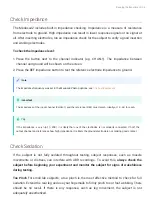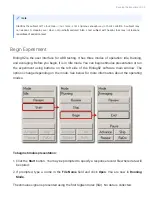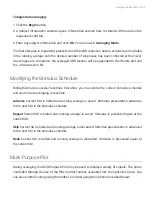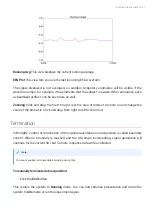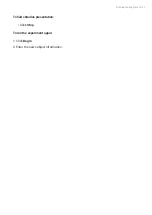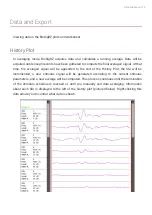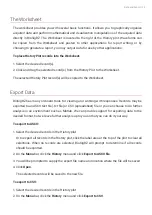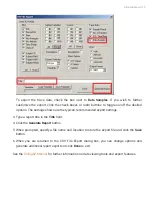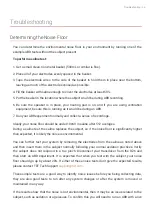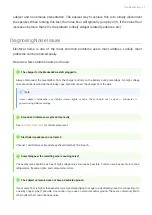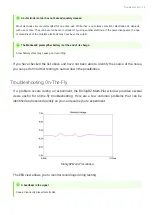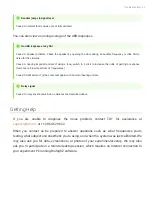
The setting notes below provide information about each setting.
Setting
Notes
Presentation Rate
21/sec (period is 47.619 ms)
Why?
This rate minimizes the effects of noise from the 50/60 Hz cycle of mains power --
the most common source of noise interference in research labs. If you change the rate,
make sure the new rate does not divide evenly into 60 or 50.
How does changing the presentation rate affect ABR recordings?
Increasing the rate
gives the subject less time to recover between presentations and can decrease the
magnitude of the ABR response.
Stimulus Durations
Stimulus duration can be no more than 95% of the period.
CH1
Click.sig or TonePip.sig
When the stimulus is de
fi
ned, either by loading a standard con
fi
guration
fi
le or by
specifying a stimulus
fi
le (.sig) in the Stimulus Setup dialog, a complete list of signal
parameters and variables are added to the BioSigRZ
fi
le. During stimulus presentation,
the values of the variables change as a function of the SigGen Index (SGI), a set of
variable conditions. This is called the stimulus schedule. You can access this schedule
and choose to omit speci
fi
c SGIs, if desired. See
for more
information on modifying the standard protocol.
Ch1:|Speaker Calibration
Leave blank for now
All speakers have some variation in output across frequencies. When you use a speaker
with a known frequency response, you can adjust the stimulus output for these known
frequency characteristics. A USB drive with a speaker-speci
fi
c calibration
fi
le is provided
with your MF1 speaker. You will need to copy that
fi
le to the following directory:
C:
\TDT\BioSigRZ\TCF
. After the
fi
le has been copied to this directory you will be able to
select it from a list in the Stimulus Setup. You can also make your own .tcf calibration
fi
le by following the instructions in Chapter 6 of the
The
fi
rst time you run an ABR, we recommend skipping this step and any other
calibration until after you have been able to successfully record an ABR response. If the
system has not yet been fully tested, small mistakes in calibration can become more
di
ffi
cult to diagnose. It is important to make sure everything else is working before
calibrating and it is a good idea to start with a click stimulus. Responses to click stimuli
tend to be larger and easier to acquire.
BioSigRZ Software | 24



















